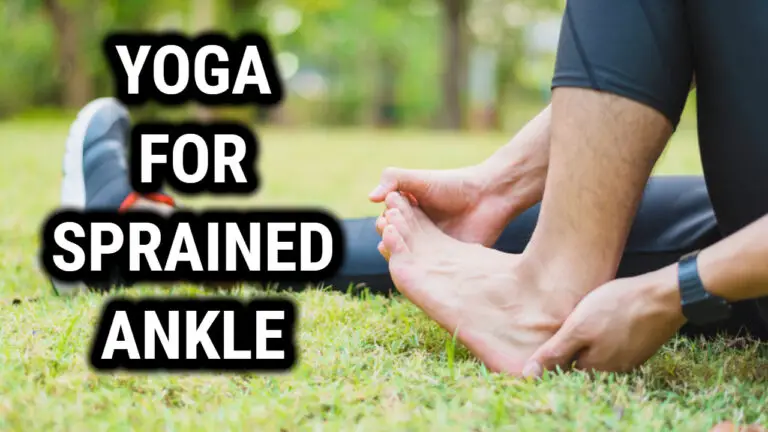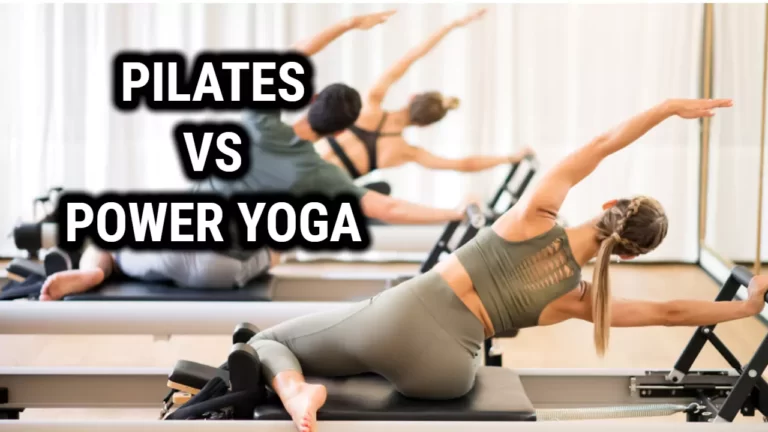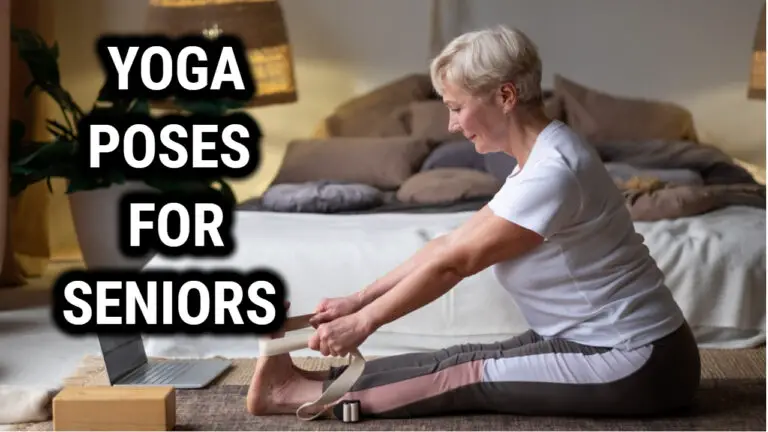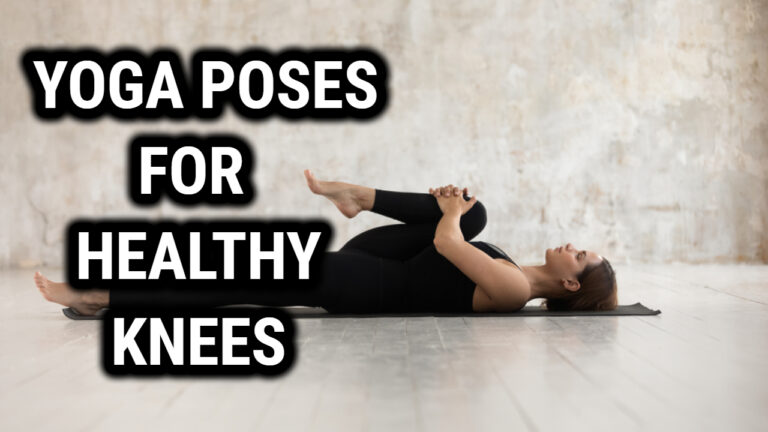How Is Yoga Helpful For Back Pain?

Suffering from back pain? Yoga might be the answer! Recent studies have shown that yoga can provide relief for many different kinds of back pain.
From neck and shoulder tension to sciatica and herniated discs, yoga has been proven to help in many cases. In this article, we’ll discuss how yoga can help with back pain and provide tips on how to get started.
If you’re looking for a safe, natural way to relieve your back pain, look no further than yoga. Not only is it a great form of exercise, but its calming effects also help ease muscle tension and reduce inflammation caused by chronic back pain.
What’s more, it doesn’t involve the use of any medication or other treatments so it’s perfect for those who are looking for an all-natural solution.
Yoga is also beneficial because it helps improve posture and strengthens the core muscles which play a big role in supporting the spine. This helps reduce the stress on the spine which can lead to less frequent episodes of back pain.
It also increases flexibility in tight areas like hips and shoulders which may be contributing to your discomfort. All these factors make yoga an ideal choice for those wanting to manage their back pain effectively without taking any kind of drugs!
Understanding Back Pain

Back pain is a common problem that affects millions of people worldwide. It can be caused by many factors, including poor posture, muscle strain, injury, and medical conditions such as arthritis and herniated discs.
The pain can range from mild to severe and can be debilitating, affecting a person’s ability to perform daily activities.
There are different types of back pain, and the location of the pain can indicate the underlying cause. For example, lower back pain is the most common type of back pain and is often caused by muscle strain or injury. Upper back pain is less common and can be caused by poor posture or injury.
Back pain can be acute or chronic. Acute back pain usually lasts less than 6 weeks and is often caused by injury or muscle strain. Chronic back pain lasts longer than 3 months and can be caused by medical conditions such as arthritis or nerve damage.
There are several ways to manage back pain, including medication, physical therapy, and surgery. However, many people turn to alternative therapies such as yoga to help alleviate their pain.
Yoga is a mind-body practice that involves physical postures, breathing techniques, and meditation. It has been shown to be an effective way to manage back pain by improving flexibility, strength, and posture.
Causes of Back Pain
Back pain can be caused by a variety of factors, including:
- Poor posture
- Injury or trauma
- Obesity
- Lack of exercise
- Stress
- Herniated or bulging discs
- Pinched nerves
- Arthritis
- Osteoporosis
It is important to identify the underlying cause of your back pain to determine the best course of treatment. In some cases, medical intervention may be necessary, while in other cases, lifestyle changes such as exercise and stress reduction can be effective.
Yoga can be a helpful tool in managing back pain by addressing some of the underlying causes, such as poor posture and lack of exercise. By strengthening the muscles that support the back and improving flexibility, yoga can help prevent future episodes of back pain.
Benefits of Yoga for Back Pain

Yoga is a popular mind-body practice that has been shown to have several benefits for people with back pain. Here are some benefits of practicing yoga for back pain:
- Improved flexibility: Yoga poses help to stretch and lengthen muscles, which can improve flexibility and range of motion in the back.
- Strengthened muscles: Certain yoga poses can help to strengthen the muscles that support the back, including the paraspinal muscles, multifidus muscles, and transverse abdominis.
- Reduced stress: Yoga is known to be a stress-relieving practice that can help to reduce tension and anxiety, which can contribute to back pain.
- Better posture: Practicing yoga can help to improve posture by strengthening the muscles that support the spine and promoting proper alignment.
- Improved balance: Certain yoga poses can improve balance and stability, which can help to prevent falls and other injuries that can worsen back pain.
It’s important to note that the benefits of yoga for back pain may vary depending on the individual and the severity of their condition. It’s always a good idea to consult with a healthcare provider before starting any new exercise program, especially if you have a history of back pain or injury.
Yoga Poses for Back Pain Relief
If you’re experiencing back pain, practicing yoga can be a great way to relieve discomfort and improve your overall flexibility and strength. Here are some yoga poses that can help alleviate back pain:
- Child’s Pose: This pose is a gentle stretch for the lower back. Begin on your hands and knees, then lower your hips back towards your heels while stretching your arms forward. Rest your forehead on the mat and breathe deeply.
- Cat-Cow Pose: This pose helps to stretch and loosen the muscles in your back. Begin on your hands and knees with your wrists directly under your shoulders and your knees directly under your hips. Inhale and arch your back, lifting your head and tailbone towards the ceiling. Exhale and round your spine, tucking your chin to your chest.
- Downward-Facing Dog: This pose stretches the entire back of your body, from your calves to your shoulders. Begin on your hands and knees, then lift your hips up and back, straightening your arms and legs. Press your hands and feet into the mat and breathe deeply.
- Triangle Pose: This pose helps to stretch the muscles in your back, hips, and legs. Begin with your feet about three feet apart, then turn your left foot out and your right foot in. Reach your left arm towards the ground and your right arm towards the ceiling, keeping your legs straight.
- Cobra Pose: This pose strengthens the muscles in your back and can help relieve pain. Begin lying on your stomach with your hands under your shoulders. Inhale and lift your chest off the ground, keeping your elbows close to your body.
Always listen to your body and only go as far as feels comfortable. If you’re experiencing severe back pain, it’s important to consult with a healthcare professional before starting any new exercise routine.
Also Read: Is Yoga Good For Hip Pain – Tips and Techniques for a Pain-Free Life
Precautions to Take While Practicing Yoga for Back Pain
Yoga is a gentle and low-impact exercise that can help alleviate back pain. However, if you have back pain, it is important to take some precautions while practicing yoga to avoid further injury. Here are some tips to keep in mind:
- Consult with a doctor or physical therapist before starting any yoga practice.
- Choose a yoga style that is appropriate for your level of fitness and experience.
- Avoid poses that cause pain or discomfort, and modify poses as needed to suit your body.
- Use props such as blocks, straps, and blankets to support your body and avoid overstretching.
- Focus on proper alignment and form, and move slowly and mindfully through each pose.
- Avoid twisting or extending the spine too much, as this can compress the intervertebral joints.
Remember that yoga is not a substitute for medical treatment or physical therapy. If you have severe or chronic back pain, it is important to work with a healthcare professional to develop a comprehensive treatment plan that includes yoga as a complementary therapy.
By taking these precautions and practicing yoga mindfully, you can enjoy the many benefits of yoga for back pain relief without risking further injury or discomfort.
When To See A Doctor For Back Pain
When it comes to back pain, yoga can be a helpful tool for both prevention and relief. However, there are times when it is necessary to seek medical advice from a doctor or pain relief specialist. It’s important to know when to see a doctor for back pain in order to ensure the best outcomes.
Here are five key considerations for when to seek medical help:
- If the pain is severe and does not improve with rest or other home remedies
- If the pain persists for more than two weeks
- If the pain radiates down the legs, arms or other areas of the body
- If yoga poses or stretching worsen the pain
- If there are signs of infection such as fever or redness around the affected area
It’s also important to keep an eye out for any other concerning symptoms such as numbness, tingling sensations, sharp pains, sudden weakness in any part of your body, difficulty controlling bladder or bowel movements and more.
In extreme cases, if you experience any of these alarming symptoms then it’s important to seek medical help immediately. Even if your back pain isn’t severe enough to warrant emergency care, regular visits with your doctor can help diagnose underlying causes and create an effective treatment plan.
Pain relief specialists can also provide insight on specific exercises and stretches that may be beneficial for your condition. Working together with medical professionals will help ensure that you get the best outcome for relieving your back pain.
Incorporating Other Therapies Along With Yoga
Yoga is often heralded as a miracle cure for back pain, and it is true that regular practice can help reduce pain and improve quality of life. But it may not be the only solution; incorporating other therapies into a yoga regimen can also be beneficial.
Acupuncture, massage therapy, hydrotherapy, tai chi and Pilates are all excellent complementary modalities that can help alleviate chronic back pain.
Acupuncture works by stimulating specific pressure points along the body to release endorphins and other hormones which promote healing and reduce inflammation.
Massage therapy helps relax tight muscles, improve circulation, reduce stress, and ease pain in the affected areas.
Hydrotherapy is the use of water in various forms—such as steam baths, saunas or hot tubs—to soothe sore muscles and provide relaxation.
Tai chi is an ancient Chinese martial art that combines meditation with gentle physical movements to create balance in the body.
Finally, Pilates focuses on core strength through low-impact exercises designed to target the deep muscles of the torso while emphasizing posture and alignment.
Incorporating these therapies alongside yoga can help create a balanced approach to managing back pain that will give long-term relief from discomfort.
By combining various methods of treatment together you can maximize your chances of finding lasting relief from your symptoms without overstretching yourself or risking injury further down the line.
Related Read: Gentle Yoga Poses For A Calmer Mind And Body
Conclusion
Yoga has been found to be an effective non-pharmacologic treatment for chronic low back pain. Studies have shown that it can reduce pain, improve function, and enhance quality of life for those suffering from this condition.
Research has also suggested that yoga may be as effective as other non-pharmacologic treatments for reducing the functional disability of back pain.
Many healthcare professionals recommend yoga as a complementary therapy for back pain. It is a low-impact exercise that can be modified to suit different levels of fitness and mobility, making it accessible to a wide range of individuals.
Additionally, yoga has been found to have other health benefits, such as reducing stress and improving flexibility, which can also contribute to overall wellbeing.
If you are considering trying yoga for back pain, it is important to speak with your healthcare provider first. They can help you determine if yoga is safe for you and provide guidance on how to get started. With the right instruction and guidance, yoga can be a safe and effective way to manage chronic low back pain.





